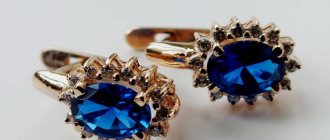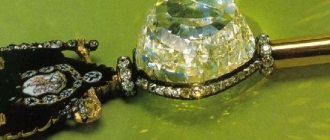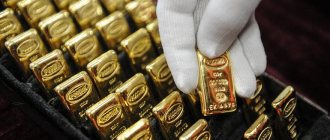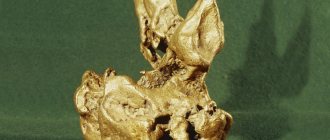Sapphire is a precious mineral of the first group, which is on the same level as diamond, emerald, and ruby. In terms of price, only a diamond is ahead of it. That is why they try to counterfeit this mineral more often than others. How to distinguish real sapphire from synthetic one, and is it possible to do this at home?
Appearance of the gem
Sapphire is a subtype of corundum. Initially, this stone has different shades of blue, from bright blue to purple. There are also yellow, powdery, green and amber-colored gems. In terms of chemical components, it is aluminum oxide, the structure of which contains impurities of iron and titanium. It is due to these components that the stone has a rich blue tint. The mineral is distinguished by its rigidity and refractive power, which gives it a pronounced shine.
The unprocessed mineral is distinguished by its uneven outline and color intensity. It is processed using a variety of methods. The most common are the facet cut and the cabochon technique, which makes the surface of the mineral smooth and smoothes out the edges. The facet cut is different in that it can be used to give the stone a variety of shapes, for example, a heart, a triangle or an octahedron. It is this type that is most often used for processing star sapphires, the structure of which contains rutile. The most valuable gemstones are deep blue, the shade of which is close to cornflower blue. Pale blue and dark blue minerals are not valued as highly.
Attention! Red sapphires do not occur in nature. Corundum, which has a rich red and garnet hue, is called ruby.
Approximate prices
In Russia you can buy a real sapphire for 2225-228670 rubles per carat . The cost of inexpensive samples starts from 2225 rubles per carat. High quality gems sell for 37,100-89,000 rubles per carat. Stones weighing more than two carats are rare and considered the most expensive. In Sri Lanka, such a sample with a certificate can be purchased for 37,100-74,160 rubles per carat.
The cost of gems per 1 carat depending on the shade is given below:
- Cornflower blue (blue) – RUB 22,250-74,165.
- Purple – 11125-22250 rubles.
- Yellow - from 2225 to 14830 rubles .
- Pink – 11125-22250 rub .
- Padparadscha - from 3,550 to 818,700 rubles .
- Green - about 5560 rubles .
Green sapphire, price - about 5560 rubles.
per carat The most expensive sapphires in the world are given below:
- "Giant of the East" . Was obtained in Sri Lanka. Differs in standard purity. Weighs 486.5 carats. It has a cost of 111,248,400 rubles (228,670 rubles per carat).
- "Millennium" . This is a gem unique in purity and size. It has no analogues. Millennium weighs 61,500 carats. And its cost is 13,720,636,000 rubles (223,100 rubles per carat).
Sapphire "Millennium"
Features of artificially grown samples
Jewelry is rare in nature, which is why its value is constantly growing. The price of substitutes produced in laboratories is significantly lower. At the same time, only a professional can distinguish a fake from a natural gem. That is why synthetic analogues are in particular demand and popularity.
Externally, the synthetic mineral is also not very different from the natural one. And thanks to modern manufacturing technologies, the product can be given virtually any shade and saturation. Hydrothermal or nanosapphires are grown from scratch or made from corundum. You can give them the desired tone using coloring. The chemical component of natural and artificially grown pebbles is aluminum oxide. They also do not differ in Mohs hardness (9 out of 10 points).
Advantages and disadvantages of artificial specimens
- Hydrothermal minerals are produced by applying high temperatures. The main disadvantage of such production is the materials. Due to their high cost, the price of “handicraft” gems also increases. However, the method allows you to grow specimens weighing up to 300 kg.
- Also, the manufacturer has unlimited possibilities when obtaining color. During cultivation, appropriate impurities are added, which provide the stone with the desired shade. It must be taken into account that initially the stones grow colorless, therefore, to prevent the acquired color from being washed out, diffusion treatment is necessary. Sapphire production is carried out around the clock and should not be interrupted - this is the main drawback.
- Artificially grown sapphire has physical and optical properties similar to natural ones. The chemical characteristics and crystal structure are also identical. The main advantage of such gems is their impeccable structure, absence of defects, and rich tones.
- The development of technologies for the production of sapphires does not stand still. Today they even use gas transportation communications. New technologies are not always of high quality, remember this.
Market analogues of sapphire
Several types of imitations of natural corundum can be found on sale. Conventionally, they can be divided into the following groups:
- cheap fakes (usually made from painted glass);
- stones grown in laboratories;
- doublets;
- natural minerals of low cost.
You can distinguish real sapphire from artificial sapphire using general identification methods.
Fakes
It is not uncommon to find jewelry in which sapphire is replaced with ordinary glass. It will not be difficult to recognize such a crude fake. If you examine such a “stone” under a magnifying glass, small bubbles will be visible in it. It is also worth considering that the glass immediately heats up in your hands. It takes a long time to heat a sapphire to body temperature.
Doublets
Doublets are composite stones made up of several layers. In such a mineral, real sapphire usually acts as the top layer, and an artificial crystal or cheap gem is glued underneath it. Such gluing can be distinguished only with the help of a magnifying glass. Doublets are often used together with damaged stones when it is necessary to hide the problematic part of the product.
Artificial analogues
Growing artificial analogues is the only official way to obtain gems. The most popular is the Verneuil technology, in which crystals are obtained by mixing corundum chips, titanium, chromium and iron under high pressure. The coloring elements are usually nickel, magnesium or cobalt oxide. Such crystals are used not only in jewelry, but also in medicine and technology.
On a note! High-quality artificial corundum not only looks like the original, but in terms of quality characteristics it can even outperform natural gemstones.
Heated sapphire or not
Synthetic stones are inexpensive 'consumer goods', but there are also cheap natural stones.
The most expensive ones are natural ones that are not heated. The rest are heated sapphires, those that have undergone a standard heat treatment procedure. Heat treatment is performed to improve the color of the stone.
In addition, heat treatment can also be used to improve transparency, that is, the raw materials from which they are made are of low quality, which means such a stone is inexpensive.
Only an experienced specialist can distinguish whether a crystal is heated or not, whether there are cracks or impurities.
How to distinguish natural stone from artificial
Despite the fact that it is quite difficult to distinguish a natural sapphire from an artificial one, if you have certain knowledge, it is still possible to identify the authenticity of the stone. It should be taken into account that the artificial analogue is not only similar in appearance to natural stone, but also practically does not differ in physical properties. How can you test sapphire at home, and how effective are such methods?
It is important to know! Natural sapphire is one of the hardest minerals. It is capable of leaving marks on any other stone except ruby and tungsten carbide.
Mechanical impact
The natural mineral has smooth edges and sharp corners; in hardness and strength it is second only to diamonds. Therefore, it can only be damaged or scratched using a stone of the same hardness. At the same time, sapphire easily scratches any other surfaces, for example, tempered glass. It is recommended to carry out such an experiment on an inconspicuous area of the mineral.
You can also identify sapphire using the following methods:
- measurement with a refractometer. For a real mineral, the refractive index varies between 1.762-1.778;
- placement in monobromonaphthalene. After placing the jewelry in the liquid, the container should be placed against the background of a white sheet. A real stone will produce colored straight stripes on a sheet, while an artificial one will produce curved ones;
- a natural mineral does not change hue under ultraviolet light, while a grown analogue glows white or a faint greenish color.
It is worth considering that you can find out the authenticity of a mineral only using the first 2 methods, which are carried out only in laboratory conditions, with the appropriate equipment.
Foreign matter analysis
Natural sapphire differs from artificial sapphire in that it takes several thousand years to form. This feature affects the external properties of the stone. If you examine a star sapphire under a magnifying glass, foreign inclusions will be visible in it, and you will also be able to see the heterogeneous structure of the mineral. These features will be especially noticeable in bright sunlight. It is also worth considering that a natural gem cannot contain gas bubbles, which are typical for bottle glass.
The easiest way to distinguish natural specimens with the effect of asterism, which contain inclusions in the shape of a six-pointed star. When a natural stone is slowly turned, the star will move, while for an artificial one it will remain in the center. Today it is impossible to fake such an effect.
Color
A real sapphire differs from a fake in that its shade does not change, regardless of lighting. That is why, when conducting an examination, the bead is always carefully examined under natural light, and then under bright lamps. If the shade of the supposed jewelry changes, this indicates a fake.
Precious stones are always issued with appropriate quality certificates. If the document indicates that the stone has undergone heat treatment, it is checked under ultraviolet light. The synthetic mineral will have a slight greenish tint, while the natural one will have white highlights.
Formal methods
It is almost impossible to independently determine the authenticity of a sapphire and distinguish it from the same colored cubic zirconia or zirconium without the necessary skills. It’s wiser not to take risks and involve specialists in the assessment process. As for certificates and mineral passports, you can study them yourself.
Verification of certificates and documents
To minimize the likelihood of counterfeiting, it is recommended to purchase jewelry only in well-known stores with an impeccable reputation. Such salons present a corresponding certificate for each gem. When purchasing, the seller must tell you how the stone was processed. To make the color of the mineral more saturated, they are often exposed to x-rays or heated at high temperatures. Natural pebbles are not afraid of such tests, but their synthetic counterparts become striped.
Invitation of an expert
The most reliable way to verify the authenticity of a stone is to engage an independent expert who will check the stone and make a preliminary conclusion right in the store. But it is worth considering that a final assessment of the origin of a stone is possible only with professional tools. You will have to pay for such a service, but compared to the cost of a natural insert, this is a trifle.
Types of stone
Depending on the color, you can purchase the following sapphire:
- Blue.
- White.
- Yellow.
- Padparadscha (a combination of orange, pink and purple shades).
- Black.
- Blue.
- Pink.
- Green.
You can buy a gem:
- Faceted.
- No cut.
All sapphires can be divided into two types:
- Star-shaped . They have a star-shaped optical effect. After cutting using the cabochon technique, a six-pointed star becomes clearly visible on the surface of the stone. This is explained by the presence of needle-shaped microcrystals in the structure of the mineral. There are gems with a 12-pointed star, but they are very rare and expensive.
- Declassed . These are defective stones (with cracks, inclusions, opaque, very dark). Due to their non-marketable appearance, they are sold cheaper.
According to the place of purchase, the gem can be:
- Ordered from the online store.
- Purchased from an ad.
- Taken from a jewelry store.
- Purchased from a private jeweler.
Yellow sapphire, price - 2225-14830 rubles. per carat
Useful tips for choosing a stone
Since many artificial analogues are very similar in appearance to natural corundum, in order not to make a mistake in choosing, when purchasing jewelry with sapphire, it is recommended to follow these recommendations:
- It is recommended to purchase products only with stones that do not change their color, regardless of lighting. In this case, preference should be given to minerals of a rich blue color, as they are considered the most valuable;
- the cost of a stone depends on its purity. The most valuable are the gems of the first group, inside of which you can notice minimal inclusions. It should be taken into account that the gradation includes 4 categories of mineral purity. The price of group 4 sapphires is the lowest; inclusions and foreign impurities in them are the most noticeable. In most cases, the cost of a stone is determined taking into account the shade of the mineral and its purity;
- Classically cut minerals are of the greatest value. A high-quality gem should have smooth and symmetrical edges, no matter what angle it is viewed from;
- Before purchasing a product, it is recommended to evaluate the strength of the stone. If after contact with a sharp object there is no damage left on it, this indicates that the mineral is really of high quality;
- carat Jewels weighing more than 10 carats are rarely found in nature. If the weight of the product significantly exceeds this value, the risk of purchasing a counterfeit increases.
Artificial (synthetic) sapphire - what is it?
The first thing that is important to pay attention to is that if you see an artificial stone, this indicates that the seller is offering a low-quality fake. The difference between natural and synthetic corundum lies only in the method of their production.
Now let's figure out what this means? The real ones were formed naturally, while the artificial ones were grown by humans using certain equipment. It is also important to consider that regardless of origin, both gems have similar characteristics.
Artificially grown sapphires help satisfy the market need for gemstones. During production, you can give the stone any color, controlling its saturation. This explains the popularity of synthetic crystals among modern jewelry stores.
If a sapphire is obtained by a synthetic, hydrothermal method, the documents for it will necessarily have the corresponding mark - “gt” or “s”. If it is not there, and the seller passes off the mineral as natural, he is breaking the law.
Why buying jewelry with sapphires is a profitable investment
- Kashmir sapphires are prized above others because of their color. But they are no longer mined, the deposit has dried up.
- Your purchase will only become more expensive over time, since there are few mining sites and they are on the verge of depletion
- By purchasing exclusive designer items with sapphire, you create your own collection of family jewelry
- You can wear them
- And finally, this is a stone of aristocrats; you demonstrate status.
Go to menu
Heated sapphire or not
Synthetic stones are inexpensive 'consumer goods', but there are also cheap natural stones.
The most expensive ones are natural ones that are not heated. The rest are heated sapphires, those that have undergone a standard heat treatment procedure. Heat treatment is performed to improve the color of the stone.
In addition, heat treatment can also be used to improve transparency, that is, the raw materials from which they are made are of low quality, which means such a stone is inexpensive.
Only an experienced specialist can distinguish whether a crystal is heated or not, whether there are cracks or impurities.
Myths about sapphires on the Internet
On the Internet you can read the following about sapphires:
- Products containing sapphire should be stored in a dark place.
- Their coloring is unstable
- The crystal may become cloudy or change color
- Diffuse-colored sapphires are the cheapest and are most often passed off as naturally occurring stones.
- It may get scratched.
The last statement of some sellers is very surprising, because on the Mohs scale its hardness is 9, and diamond is 10. How can it scratch?
The rest is only partly true.
For example: - As a standard, all pale sapphires are heated and irradiated, due to this they receive color. — And for cheap raw materials, heat treatment is carried out additionally in order to hide defects. — If the quality of the source material is poor, or sometimes if the technology is violated, the crystals inside still remain light. As a result, in terms of the quality of the stone, a refined sapphire can be more expensive than a natural unheated one; this can only be determined using special equipment. —Can you distinguish diffusely colored blue sapphire from doublet and synthetic sapphire by eye? - Then you need a gemologist.
Go to menu
Why buying jewelry with sapphires is a profitable investment
- Kashmir sapphires are prized above others because of their color. But they are no longer mined, the deposit has dried up.
- Your purchase will only become more expensive over time, since there are few mining sites and they are on the verge of depletion
- By purchasing exclusive designer items with sapphire, you create your own collection of family jewelry
- You can wear them
- And finally, this is a stone of aristocrats; you demonstrate status.
Go to menu
Myths about sapphires on the Internet
On the Internet you can read the following about sapphires:
- Products containing sapphire should be stored in a dark place.
- Their coloring is unstable
- The crystal may become cloudy or change color
- Diffuse-colored sapphires are the cheapest and are most often passed off as naturally occurring stones.
- It may get scratched.
The last statement of some sellers is very surprising, because on the Mohs scale its hardness is 9, and diamond is 10. How can it scratch?
The rest is only partly true.
For example: - As a standard, all pale sapphires are heated and irradiated, due to this they receive color. — And for cheap raw materials, heat treatment is carried out additionally in order to hide defects. — If the quality of the source material is poor, or sometimes if the technology is violated, the crystals inside still remain light. As a result, in terms of the quality of the stone, a refined sapphire can be more expensive than a natural unheated one; this can only be determined using special equipment. —Can you distinguish diffusely colored blue sapphire from doublet and synthetic sapphire by eye? - Then you need a gemologist.
Go to menu










